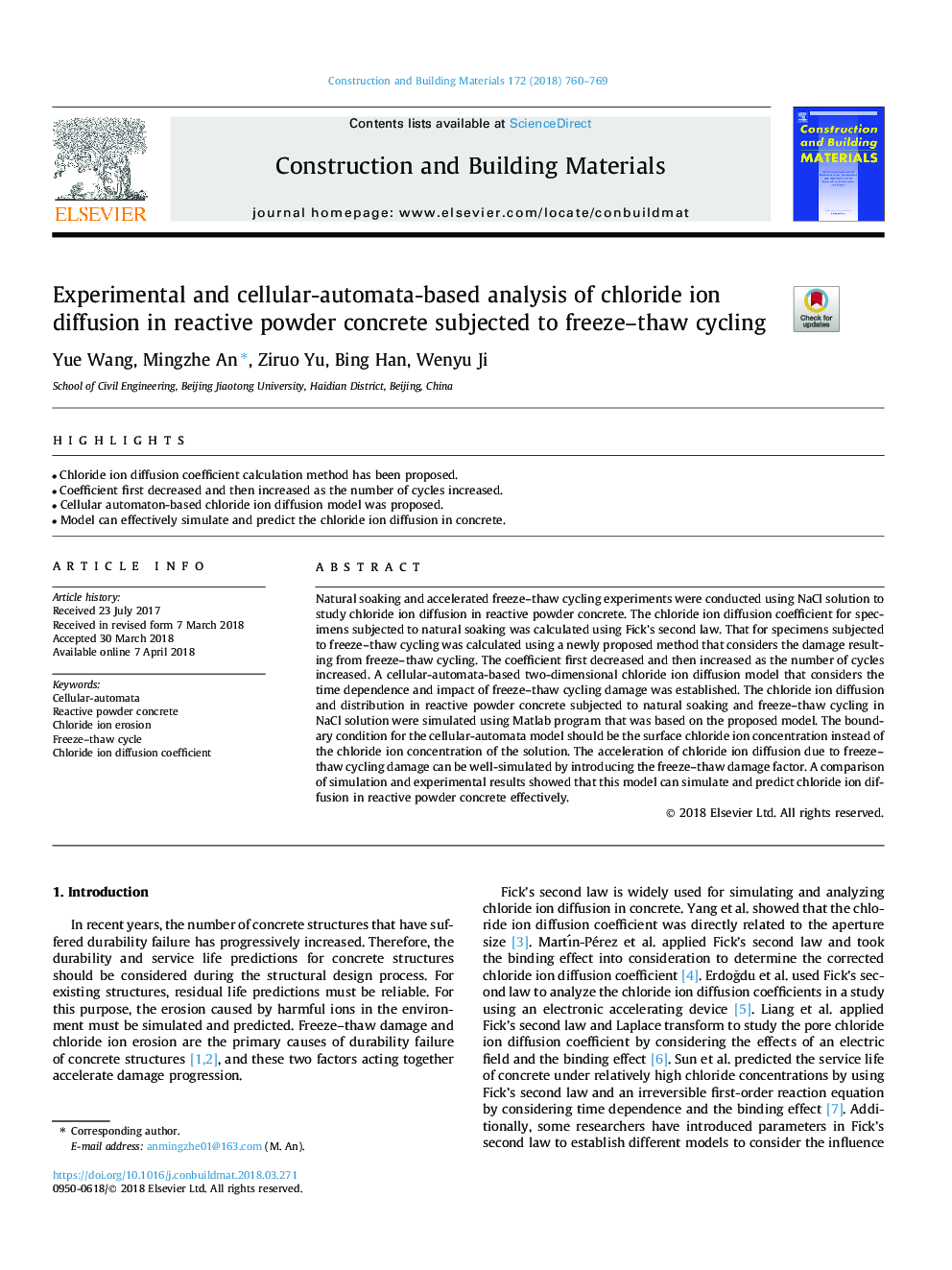| Article ID | Journal | Published Year | Pages | File Type |
|---|---|---|---|---|
| 6714046 | Construction and Building Materials | 2018 | 10 Pages |
Abstract
Natural soaking and accelerated freeze-thaw cycling experiments were conducted using NaCl solution to study chloride ion diffusion in reactive powder concrete. The chloride ion diffusion coefficient for specimens subjected to natural soaking was calculated using Fick's second law. That for specimens subjected to freeze-thaw cycling was calculated using a newly proposed method that considers the damage resulting from freeze-thaw cycling. The coefficient first decreased and then increased as the number of cycles increased. A cellular-automata-based two-dimensional chloride ion diffusion model that considers the time dependence and impact of freeze-thaw cycling damage was established. The chloride ion diffusion and distribution in reactive powder concrete subjected to natural soaking and freeze-thaw cycling in NaCl solution were simulated using Matlab program that was based on the proposed model. The boundary condition for the cellular-automata model should be the surface chloride ion concentration instead of the chloride ion concentration of the solution. The acceleration of chloride ion diffusion due to freeze-thaw cycling damage can be well-simulated by introducing the freeze-thaw damage factor. A comparison of simulation and experimental results showed that this model can simulate and predict chloride ion diffusion in reactive powder concrete effectively.
Related Topics
Physical Sciences and Engineering
Engineering
Civil and Structural Engineering
Authors
Yue Wang, Mingzhe An, Ziruo Yu, Bing Han, Wenyu Ji,
